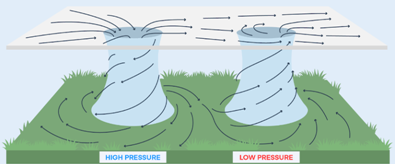

30th August 2024 (9 Topics)
Context
A deep depression currently situated over Saurashtra and Kachchh regions of Gujarat is expected to intensify into a cyclonic storm (Cyclone Asna). Cyclone Asna would be the first cyclone to form in August in the North Indian Ocean (NIO) region since 1981 and the first in the Arabian Sea since 1976.
What are Cyclones?
- A cyclone is a large-scale system of air that rotates around the centre of a low-pressure area.
- The cyclone forms around the low-pressure area, called a depression, along a zone of cold and warm air exchange called the ‘eye wall’. The eye is the central and calmest part of the cyclone.
- From this eye wall, long, arching cloud and rain systems called rainbands spiral outwards, which bring alternating periods of intense rain and calm spells during a cyclone.
- The air circulates inward in an:
- anticlockwise direction in the Northern hemisphere
- clockwise in the Southern hemisphere
- Cyclones are classified as:
- Extra tropical cyclones (also called temperate cyclones): They occur outside of the tropic. They have “cold air at their core, and derive their energy from the release of potential energy when cold and warm air masses interact”
- Tropical cyclones: Tropical cyclones are those which develop in the regions between the Tropics of Capricorn and Cancer
- India is exposed to nearly 10 per cent of the world’s tropical cyclones. More cyclones occur in the Bay of Bengal than the Arabian Sea and the ratio is approximately 4:1.
Fact Box:Worldwide terminology
High Pressure Area and Low Pressure Area
|




